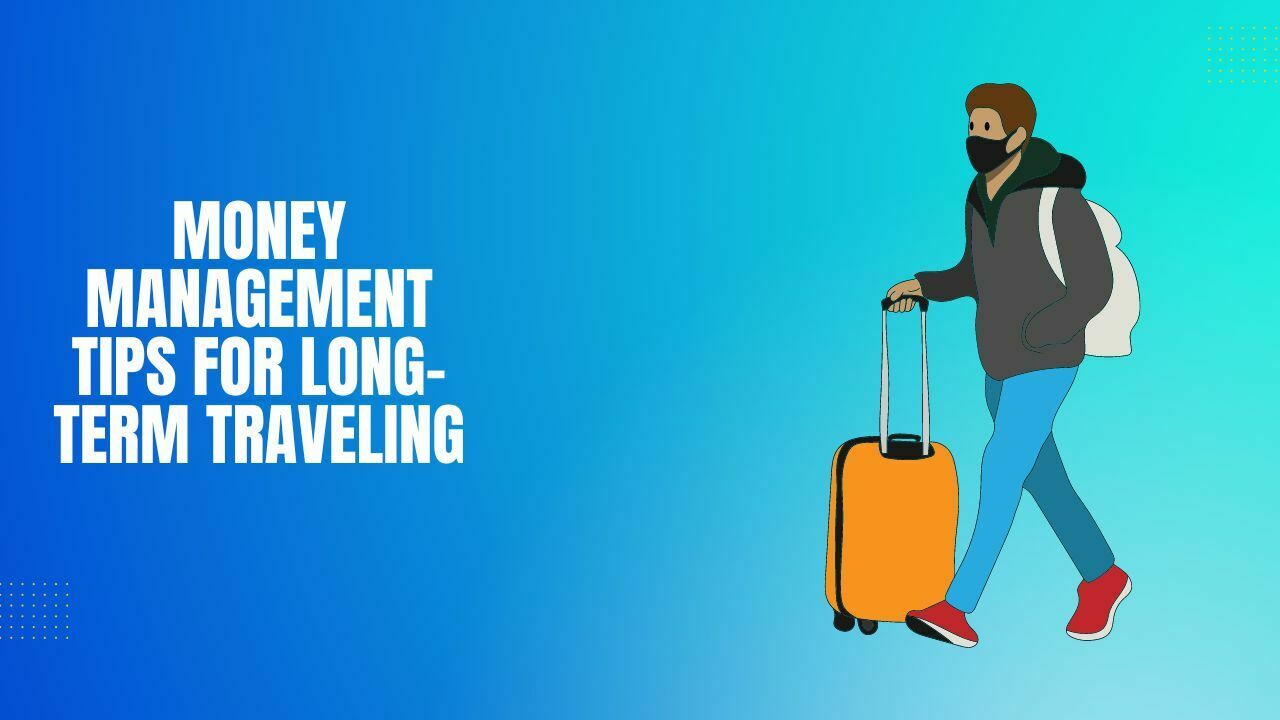As a millennial myself, I know how exciting it can be to explore the world and immerse yourself in different cultures.
However, traveling long-term can be expensive and it’s important to manage your finances effectively to make the most of your experience.
Did you know that the average millennial spends around $4,700 per year on travel alone? That’s according to a recent study by Bank of America.
But with the right money management strategies, you can stretch your dollars and make your travels last even longer.
Managing your money during long-term travel requires careful planning and budgeting. Start by establishing a travel budget and using digital budgeting tools to stay on track. Save money on daily expenses such as food and entertainment, and consider investing your money to build long-term wealth. Don’t forget to have adequate insurance coverage and a financial cushion for emergencies.
In this article, I’ll share my top tips for budgeting, saving, investing, and planning for emergencies during long-term travel.
Let’s dive in!
1. Budgeting Tips for Long-Term Travel

Let’s talk about how to establish a travel budget, implement a digital budgeting system, and stick to your budget while on the go.
1.1 Establishing a Travel Budget
When creating a travel budget, it’s important to consider factors such as transportation, accommodation, food, activities, and unexpected expenses.
Set realistic financial goals based on your itinerary and travel style, and be sure to account for currency exchange rates and fluctuations.
Don’t forget to factor in any existing debt or financial obligations you may have back home.
1.2 Implementing a Digital Budgeting System
Digital budgeting tools such as Mint and Personal Capital can help you track your spending and stay on top of your budget while traveling.
These apps allow you to link your bank accounts and credit cards, categorize your expenses, and set spending limits.
With the ability to access your budget on your phone or laptop, you can stay in control of your finances even while on the go.
1.3 Tips for Sticking to Your Budget
To avoid overspending, set a daily spending limit and track your expenses as you go.
Use tricks such as cooking your own meals, taking public transportation, and staying in budget-friendly accommodations to cut costs.
Be flexible with your itinerary to take advantage of any last-minute deals or discounts, and don’t be afraid to negotiate prices.
Always keep an emergency fund on hand to cover unexpected expenses, and be mindful of any potential scams or fraud while traveling.
Here’s a table summarizing the tips for establishing and sticking to your travel budget:
| Tips for Establishing a Travel Budget | Tips for Sticking to Your Budget |
| Consider transportation, accommodation, food, activities, and unexpected expenses | Set a daily spending limit |
| Set realistic financial goals based on your itinerary and travel style | Track your expenses as you go |
| Account for currency exchange rates and fluctuations | Use cost-cutting tricks like cooking your own meals and taking public transportation |
| Factor in existing debt and financial obligations | Be flexible with your itinerary |
| Keep an emergency fund on hand |
2. Saving Money while Traveling Long-Term

Let’s focus on how to save money on major expenses such as transportation and accommodation.
2.1 Planning Ahead for Major Expenses
One of the best ways to save money on transportation is to plan ahead and book your tickets in advance.
Use comparison websites such as Skyscanner or Kayak to find the cheapest flights, and consider using budget airlines such as Ryanair or EasyJet.
If you’re traveling by train, look for discounts such as youth fares or early bird specials. Taking a bus or carpooling can also be a cost-effective option.
When it comes to finding affordable accommodation, consider staying in hostels or Airbnb rentals instead of hotels.
Use websites such as Hostelworld or Booking.com to find the best deals on hostels, and be sure to read reviews and check for any hidden fees.
If you’re staying in an Airbnb, look for listings with a long-term discount or negotiate with the host for a better rate.
Consider house-sitting or Couchsurfing as a free alternative to traditional accommodations.
Here’s a table summarizing the tips for saving money on transportation and accommodation:
| Tips for Saving Money on Transportation | Tips for Finding Affordable Accommodation |
| Book tickets in advance | Stay in hostels instead of hotels |
| Use comparison websites | Consider Airbnb rentals |
| Look for discounts and specials | Read reviews and check for hidden fees |
| Consider bus or carpooling | Negotiate for a better rate |
| Consider house-sitting or Couchsurfing |
2.2 Managing Daily Expenses
2.2.1 Food and Drink Hacks
Eating out at restaurants can be expensive, especially when you’re traveling long-term.
Here are some food and drink hacks to help you save money while traveling:
- Cook your own meals
- Buy groceries from local markets
- Eat street food or at food trucks
- Look for happy hour specials
- Buy drinks at the store
2.2.2 Entertainment and Activity Savings
Entertainment and activities can also be a big expense when traveling long-term.
Here are some entertainment and activity tips to help you save money while traveling:
- Look for free or cheap things to do
- Visit museums or parks with free admission
- Go on a hike or bike ride
- Attend local events or festivals
2.3 Creating Additional Sources of Income
2.3.1 How to make money while traveling
Consider freelance work in your area of expertise, such as writing or graphic design.
You can also take on odd jobs like house-sitting or pet-sitting.
Another option is to teach English online or offer your services as a tour guide.
2.3.2 Pros and cons of working while traveling
The pros include earning extra money, gaining new skills and experiences, and meeting new people.
However, the cons may include limited availability of work opportunities, sacrificing travel time for work, and navigating legal and tax requirements.
Remember to balance work and travel, and don’t let work take over your travel experience.
With some planning and creativity, creating additional sources of income while traveling can be a great way to save money and make your trip last longer.
3. Investing Strategies for Long-Term Travel

Investing is essential if you want to make your money work for you and secure your financial future.
Let’s dive into the importance of investing and ways to invest while traveling.
3.1 Why Invest
Investing is one of the most powerful tools you can use to grow your wealth. It’s all about making your money work for you.
When you invest, you’re putting your money into assets that have the potential to increase in value over time. This means that your money can grow without you having to do anything.
According to historical data, the average annual return of the S&P 500 index, a benchmark for the U.S. stock market, is around 10%.
By investing your money, you’re setting yourself up for long-term financial success.
It allows you to:
- Grow your wealth: Investing can help you build a significant amount of wealth over time.
- Beat inflation: Inflation erodes the purchasing power of your money over time. Investing can help you keep up with inflation and even beat it.
- Secure your financial future: By investing, you can create a nest egg that will provide you with financial security in retirement.
3.2 Ways to Invest Money While Traveling
Now that we’ve covered the importance of investing, let’s talk about ways to invest your money while traveling.
Here are some options:
- ETFs: Exchange-traded funds (ETFs) are a popular way to invest in the stock market. They’re similar to mutual funds but trade like stocks on an exchange. ETFs are easy to buy and sell and offer diversification, which can help reduce risk.
- Robo-advisors: Robo-advisors are digital platforms that use algorithms to build and manage investment portfolios. They offer a low-cost way to invest and are ideal for beginners.
- Real estate: Real estate can be a great way to diversify your investment portfolio. You can invest in real estate investment trusts (REITs) or buy a rental property. Keep in mind that real estate investments require more time and effort than other investment options.
- Peer-to-peer lending: Peer-to-peer lending platforms allow you to lend money to individuals or businesses in exchange for interest payments. This can be a high-risk, high-reward investment option.
Here’s a table summarizing the investment options:
| Investment Option | Description | Benefits | Risks |
| ETFs | Invest in a basket of stocks | Easy to buy and sell, diversification | Market volatility |
| Robo-advisors | Digital platforms that manage investments | Low-cost, ideal for beginners | Limited customization |
| Real estate | Invest in REITs or buy a rental property | Diversification, potential for cash flow | Time and effort, market volatility |
| Peer-to-peer lending | Lend money in exchange for interest payments | Potential for high returns | High risk |
3.3 Risks and Rewards of Investing While Traveling
While investing can be a powerful tool for building wealth, it’s essential to understand the risks involved and strategies for mitigating them.
3.3.1 The Importance of Understanding Market Fluctuations
The stock market is inherently volatile, and there’s always a risk of losing money.
However, it’s important to remember that market fluctuations are normal and expected.
According to a study by JP Morgan, from 1980 to 2015, the S&P 500 index experienced an average intra-year decline of 14.2% but still ended up with a positive return for the year 29 out of 36 years.
It’s crucial to understand market fluctuations and not panic during a downturn.
Investors who stay invested and ride out the volatility tend to see higher returns over the long term.
However, it’s also important to have strategies in place to mitigate risk.
3.3.2 Strategies for Mitigating Risk
Here are some strategies for mitigating the risk of investing while traveling:
- Diversify your portfolio: Diversification is one of the best ways to mitigate risk. By investing in a variety of assets, you spread your risk and reduce the impact of market fluctuations.
- Invest in low-cost index funds: Low-cost index funds are a great way to invest in the stock market while minimizing risk. They offer diversification and tend to have lower fees than actively managed funds.
- Set up stop-loss orders: A stop-loss order is an instruction to sell a security when it reaches a certain price. This can help limit your losses if the market takes a downturn.
- Avoid making emotional decisions: Emotional decisions can lead to impulsive buying and selling, which can hurt your returns. Stick to your investment strategy and don’t make decisions based on fear or greed.
3.4 Recommended Investment Options for Travelers
When it comes to investing while traveling, there are low-risk and high-risk, high-reward options to consider.
3.4.1 Low-Risk Investment Options
Low-risk investments are ideal for travelers who want to preserve their capital and minimize the risk of losing money.
Here are some recommended low-risk investment options:
- Savings accounts: Savings accounts are a safe and easy way to earn interest on your money. They offer FDIC insurance and can be accessed easily from anywhere in the world.
- Certificates of Deposit (CDs): CDs offer higher interest rates than savings accounts, but require you to leave your money untouched for a set period.
- Treasury bonds: Treasury bonds are issued by the U.S. government and are considered one of the safest investments available. They offer a fixed rate of return and are backed by the full faith and credit of the U.S. government.
3.4.2 High-Risk, High-Reward Investment Options
High-risk, high-reward investments are ideal for travelers who are comfortable with taking on more risk in exchange for the potential for higher returns.
Here are some recommended high-risk, high-reward investment options:
- Stocks: Stocks offer the potential for high returns but are also subject to market volatility. It’s important to diversify your portfolio and not invest more than you can afford to lose.
- Mutual funds: Mutual funds pool money from multiple investors to invest in a diversified portfolio of stocks, bonds, and other assets. They offer the potential for higher returns than savings accounts or CDs but are subject to market volatility.
- Real estate investment trusts (REITs): REITs invest in real estate and offer the potential for high returns through rental income and property appreciation. However, they are subject to market fluctuations and require a significant initial investment.
4. Financial Planning for Long-Term Travel

It’s important to have an emergency fund while traveling to cover unexpected expenses or emergencies.
An emergency fund is a savings account set aside for unexpected expenses like medical emergencies, unexpected flights, or lost luggage.
Having an emergency fund is important because it can help prevent financial stress and prevent you from going into debt when unexpected expenses arise.
4.1 Tips for Building a Financial Cushion While Traveling
Here are some tips for building a financial cushion while traveling:
- Set a savings goal: Determine how much you want to save and set a savings goal. A good rule of thumb is to save at least 3-6 months of living expenses.
- Automate savings: Set up automatic transfers from your checking account to a savings account each month.
- Reduce expenses: Cut down on unnecessary expenses, like eating out or expensive activities, to free up more money for your emergency fund.
- Find alternative income streams: Consider finding ways to earn money while traveling, like freelancing or working remotely.
- Choose low-cost destinations: Consider traveling to countries with a lower cost of living to stretch your budget further.
3.2 Insurance for Long-Term Travelers
It’s important to protect yourself and your finances while on the road.
Travel insurance can cover unexpected events like medical emergencies, trip cancellations, lost luggage, and more.
It’s important to read the policy carefully to understand what is covered and what isn’t.
3.2.1 Recommended insurance policies for long-term travelers
Here are some recommended insurance policies for long-term travelers:
- Medical insurance: If you’ll be traveling for an extended period, it’s a good idea to get medical coverage that will cover you in case of illness or injury. Some popular options include World Nomads and SafetyWing.
- Trip cancellation/interruption insurance: This can provide coverage if you need to cancel or cut short your trip due to unexpected events. Many travel insurance policies include this coverage.
- Personal liability insurance: This can provide coverage if you accidentally cause damage or injury to someone else while traveling. Some credit cards also provide this coverage.
It’s important to shop around and compare policies to find one that meets your needs and budget.
Don’t skimp on insurance, as it can provide peace of mind and protect your finances in case of unexpected events.
3.3 Preparing for Financial Emergencies
It’s important to have a plan in place for unexpected expenses.
Here are some tips:
3.3.1 Tips for handling unexpected expenses:
- Prioritize your expenses and cut back on non-essential spending
- Use cash instead of credit cards to avoid interest and fees
- Look for ways to earn money while traveling, such as freelancing or working remotely
- Consider getting a side job or finding a temporary job in the area where you’re staying
3.3.2 How to access emergency funds while traveling:
- Keep some cash in a safe place in case of emergencies
- Have a credit card with a high enough limit for emergencies
- Use a mobile banking app to transfer money from your savings to your checking account if needed
- Have a trusted friend or family member who can send you money in case of emergency
It’s also important to have a plan in place for medical emergencies while traveling.
Make sure you have travel insurance that covers medical expenses and emergency evacuation if needed.
And always research local healthcare options before you travel to a new country.
Bottom Line…
As millennials, we’re always looking for ways to maximize our travel experiences while keeping our finances in check.
And trust me, it’s not an easy feat!
According to a survey by Bankrate, only 39% of Americans have enough savings to cover a $1,000 emergency expense.
That’s a scary thought when you’re on the road and far away from home.
But with the right money management strategies, we can ensure we’re financially prepared for anything that comes our way.
First and foremost, it’s important to set a budget and stick to it. This means tracking your expenses, prioritizing your spending, and avoiding unnecessary purchases.
One way to do this is by using budgeting apps like Mint or YNAB, which can help you visualize your spending habits and identify areas where you can cut back.
Another key aspect of long-term travel is finding ways to earn money on the road.
This could mean freelancing, starting an online business, or finding temporary work in your destination country.
Lastly, it’s crucial to have a solid financial safety net in place.
This means having an emergency fund with at least six months’ worth of living expenses, as well as a travel insurance policy that covers medical emergencies and trip cancellations.
Overall, long-term travel can be an incredible experience, but it’s important to be financially prepared.
By setting a budget, finding ways to earn money, and having a financial safety net, we can ensure we’re able to make the most of our travels without breaking the bank.
Happy travels!
